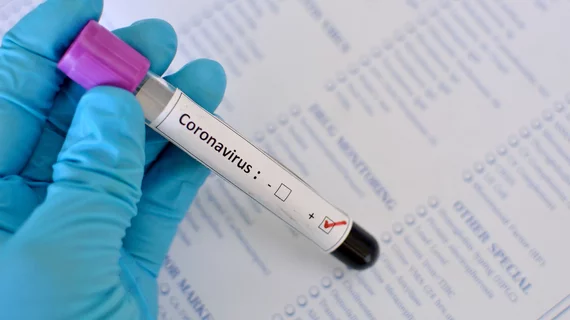U.S. hospitals are facing numerous challenges as they work to combat the continued spread of COVID-19, according to a new government survey of more than 300 hospital administrators. Common problems include testing patients who may be infected, providing sufficient care to patients who have the virus, and protecting the health and safety of healthcare workers.
The survey, prepared by the U.S. Department of Health and Human Services (HHS) Office of Inspector General (OIG), included feedback from hospital administrators representing 323 Medicare-certified hospitals throughout the United States. While 100 participating hospitals were critical access hospitals, 24 were major teaching hospitals and another 10 were special pathogen centers specifically designed to treat infectious diseases. Survey responses were gathered March 23-27, 2020.
“We have collected this information as an aid for HHS as it continues to lead efforts to address the public health emergency and support hospitals and other first responders,” according to a statement on the OIG website. “In addition, hospitals may find the information about each other's strategies useful in their efforts to mitigate the challenges they are facing.”
Testing issues
Looking specifically at the testing process, respondents are experiencing “severe shortages of testing supplies and extended waits for test results.” Delays are occurring at external laboratories, for instance, and workers are reporting “infrequent specimen pickups.” The only consistency with testing, in other words, appears to be that here is no consistency.
“Some hospitals described success getting results more quickly by using commercial labs, whereas others received more timely results from public sources,” according to the OIG report. “Still others experienced inconsistent turnaround times, leaving them unable to predict when results would arrive or advise patients on how long they should self-quarantine or undertake other measures while awaiting results.”
Problems obtaining PPE
Hospitals have also emphasized that personal protective equipment (PPE) shortages are a very real concern. One administrator called the shortage of supplies “the number one challenge all across the system.”
“The administrator of one hospital stated that before COVID-19, the hospital’s medical center used around 200 masks per day and that it was now using 2,000 per day,” according to the report. “Delays in test results led to heavier use of PPE until a patient’s status was confirmed. Another hospital administrator noted the ‘fear factor’ associated with COVID-19, which led to all staff wearing masks instead of only a subset.”
Prices are another PPE-related issue hospitals face—“multiple hospitals” told the OIG that they are concerned about sharp price increases for items such as simple masks.
Staffing shortages
The report also found that hospitals are worried they will be able to “maintain adequate staffing levels.” While some facilities were already facing some shortages before the pandemic, others are experiencing new issues because, in the past, they had relied on “traveling nurses” who can no longer provide additional help.
“Unlike a disaster where the surge is over in a matter of days, with this situation we have to prepare for this to last many months,” one administrator told the OIG. “We have to scale up in equipment and staff, and prepare for this to last a long, long time. This is very challenging for staff.”
There is also another key factor: COVID-19 is spreading to healthcare providers as they work to save patients, putting their own health at risk and leading to problems for the hospital. Even if only one employee is infected—and many more than that have already been infected at some hospitals—it can cause significant issues.
“The administrator for one small, rural hospital explained that if one patient tested positive for COVID-19 the hospital would have to put 16 staff members in quarantine, which would essentially halt its operations,” according to the report.
Concerns over ventilators
Hospitals of all sizes are worried about potential ventilator shortages in the near future. Smaller facilities are the most worried, and some have reported being able to only maintain “few, if any” ventilators for patients. This has all caused hospitals to consider the possibility that they may be asked to make “difficult decisions” when it comes to patient management.
“As hospitals planned for a surge of patients, many reported that they were either developing or revising guidelines regarding ventilator utilization decisions, although at the time of our survey no hospital reported limiting ventilator use,” according to the report. “Some administrators noted that with difficult decisions about ventilator allocation also come concerns about liability.”
Government assistance is desperately needed
Hospital administrators want help from the government in these challenging times. These are the five areas respondents focused on the most: assistance with supplies and equipment; assistance with workforce allocation, assistance with the capacity of facilities, financial assistance, and clear communication of information to the public.
That final area shows just how challenging it can be to keep up with government guidelines, both for medical professionals and the patients they care for on a daily basis.
“Some hospitals reported that the multiple changes in guidance contributed to a greater sense of confusion, fear, and distrust among staff that they could rely on hospital procedures to protect them,” according to the report.
The survey did have certain limitations. Larger hospitals with more than 500 beds, for example, were underrepresented compared to smaller facilities. Also, the pandemic is evolving at such a rapid rate that data from late March may already be somewhat out of date.
The 41-page report is available to be read in full here.

